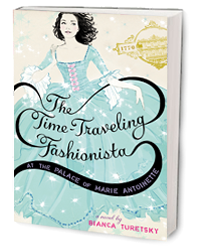It’s the Best Time to Write!
 Here are four reasons why NOW is the best time for me to write:
Here are four reasons why NOW is the best time for me to write:
1. NEW TECHNOLOGY — When I was writing in the 1990s, my group’s newsletter consisted of articles that were typed, cut out, pasted on a sheet of paper, duplicated, and handed out at meetings once a month. Hard to believe, huh? Marketing consisted mostly of business cards and swag to be handed out at conventions. Or buying expensive magazine ads. Now, computer technology is fast, free, colorful, and effective.
2. NEW PUBLISHING OPPORTUNITIES — A writer no longer has to wait months or years to hear back from agents and editors. Sure, the big traditional publishers are still a great way to go, but there are more opportunities now with smaller, online publishers. Not to mention, e-book self-pubbing that doesn’t consist of piled books sitting in one’s garage. A writer can feel hopeful that if she writes, she WILL get published. No question.
3. NEW WAYS OF CONNECTING WITH READERS — Facebook, Twitter, Pinterest, etc. . A writer never need feel isolated or alone.
4. NEW LEARNING TOOLS — Back in the day, I was hungry and thirsty, soaking up everything I could find on how-to-write. I was always scrabbling for information. If I found a dated library book or picked up one good piece of info at a conference, I felt lucky. Young people just don’t realize or appreciate how wonderful it is to have the whole world of information at the touch of a finger.
Hooray! Writing is great anytime, but I’m finding it gets better and better.
Is NOW your best time to write?
If so, what are you waiting for? 🙂
Is Your Story Worth Saving?
 That was the question posed by Larry Brooks on his blog, StoryFix.com. He regularly posts examples of his critiques (with the authors’ permission) to show how a faulty concept and premise can ruin a story. Invariably, this elicits all sorts of blog comments suggesting minor “tweaks” to save the story. “Well, what if you just change this or that . . . ” or “Maybe you could have your character do this . . . ” I sense Larry’s frustration. I’m re-posting my comment I left on Larry’s blog. I think it’s important, because, in my own evaluating/editing for my day-job, I see this mindset crop up in authors again and again. But there’s hope!:
That was the question posed by Larry Brooks on his blog, StoryFix.com. He regularly posts examples of his critiques (with the authors’ permission) to show how a faulty concept and premise can ruin a story. Invariably, this elicits all sorts of blog comments suggesting minor “tweaks” to save the story. “Well, what if you just change this or that . . . ” or “Maybe you could have your character do this . . . ” I sense Larry’s frustration. I’m re-posting my comment I left on Larry’s blog. I think it’s important, because, in my own evaluating/editing for my day-job, I see this mindset crop up in authors again and again. But there’s hope!:
Can all stories be saved by tweaking? No. I’m going to be a little harsh here and say that the issue sometimes boils down to a problem of ego. It’s essential to separate BEING A WRITER from THIS PARTICULAR PAGE. The two things are entirely different.
A person sits down, maybe with a glass of wine at hand, and types a novel. He types and types, but he doesn’t THINK. If he did, he would be forced to admit that what he’s typing isn’t working. Somewhere deep inside, he knows this, but his ego focuses on “the wonder of me.”– “Look, everybody! I’m a writer! I’ve written a novel!” So he forges on, beating the book over the head, requiring reassurance and massaging of his feelings.
This is so unnecessary. If a person has written a novel, then yes, he’s a writer. It’s admirable. It’s wonderful. That’s a given. ‘Nuff said. He deserves applause.
Now–let’s move on to dispassionately and objectively think about what is on this particular page. Some stories can’t be saved. The necessary tweaking of concept/premise would result in essentially starting a whole new novel. And that’s okay!
If a writer can get beyond his ego and focus on the page, there will be other pages, other novels–hopefully better ones as he continues learning.
As the TV show said, “There are a million stories in the naked city.” You’re a writer–Go find ‘em! ![]()
You can go to StoryFix.com for Larry’s original post and other comments about this issue.
The Time-Traveling Fashionista!
 Here’s how to come up with a great idea for a novel and series!
Here’s how to come up with a great idea for a novel and series!
The Time-Traveling Fashionista series by Bianca Turetsky is a series of YA novels about a 13-year-old girl who learns history lessons by traveling in time. This 13-year-old just happens to love vintage clothes. The “what-if” concept is: “What if a beautiful dress could take you back in time?”
So far, the girl has gone to the Titanic, Cleopatra’s Egypt, and Marie Antoinette’s France before the Revolution.
The books are well-written, hitting on every point–the marvelous clothes, great characters, what the girl learns about history, the lesson she takes back to her own time, whether she’s able to change history, etc. Highly recommended for readers and writers of all ages.
It’s also a good lesson in coming up with book ideas–think of an exciting overall concept, add a character and premise for each individual book, an exciting plot with danger and a “ticking clock,” plus lots of love for your subject, and good writing. Can’t miss!
Happy Easter!
Writers: Make Your Dialogue Shine!
Originally posted on Writers In The Storm Blog:
By Shannon Donnelly
Great dialogue can make or break a novel.
This view may stem from growing up watching a lot of 1930’s screwball comedies. Zingers fly with rapid fire and everyone talks. A lot. But the importance of dialogue really sank in when I wrote A Proper Mistress. I went for a lot of dialogue in that book and it went on to be one of my best selling romances.
We all know great dialogue when we read it—and the best dialogue seems effortless. But good dialogue takes work, sometimes needing multiple edits and thinking it over and totally revising a scene. It also takes a few key ingredients.
1) Give Your Characters Unique Voices.
Can you tell who is talking without any tags to make this obvious?
You have to get your characters talking in order to find their voices. And each character needs a distinct voice.
That means some folks use contractions, some don’t. Some have specific phrases they like, some use colorful slang, some swear. Some characters show up right away, and others are shy.
In the Regency, Proper Conduct, I didn’t get the heroine’s voice until about page one hundred! Once I had it, I had to go back and revise the first hundred pages to put her voice back in as it should be. Before that, it was just putting in any old dialogue and faking it (you can do that in early drafts).
2) Make Your Dialogue Better Than Reality.
Readers do not want chit-chat. We get plenty of that in real life. Fiction has to be better—that means bigger, too.
You need to dramatize without going over the top to melodrama, or if you go over the top, pull it back. Study movies with great dialogue.
Study the dialogue of your favorite writers. Take the dialogue apart and see what it is you love—and use that in your own writing.
3) Layer Meaning.
Subtext is where we say one thing but mean another. There’s more going than is readily apparent.
A wife may say: “Darling, do you think we should paint the kitchen?”
But she really means, “I’m tired of living in a pig stye and I’m one step away from killing you with the butcher knife.”
- Let your characters avoid answering questions
- Change topics, and let them meander.
- Above all know how each character lies to themselves and to others. And trust your reader to be smart enough to pick up on the subtext.
4) Beware Accents, Ye Olde English, and Slang.
Watch these, and make sure you opt for clarity over everything else. This is where a reader can help you find out if you have just enough, or too much and need to pull back, or not enough flavor.
One to many “mayhaps” can throw me right out of a story. Same goes for cliché Scottish accents. When in doubt, go for telling the reader, “She had a lovely Scottish burr.” And leave it at that.
Do your research for local dialect and slang. A guy from Georgia will swear differently from a Jersey girl. Nail this. There are readers who know these things.
5) Overthinking Internal Dialogue.
Remember to give great lines to your characters to “say” (not just to think).
Internal dialogue can be a wonderful thing. Writers like Mary Balogh are masters at it. But a lot of thinking can slow your story’s pace, particularly if a character thinks and thinks and thinks about the same thing. Know the type of story you’re writing and what works best for your characters and your story.
6) Make your Tags Invisible.
Don’t trip a reader with awkward tags that clunk. Things like “he shouted miserably” and “she wailed” need cutting. This is a sure sign you’re trying to prop up weak dialogue with tags that hit the reader over the head.
Instead make the dialogue stronger. Or give your characters stronger actions. Show your characters expressing emotion through their words and actions.
7) Give every named character a star turn.
Too often characters are put in the story just to make the plot work. Turn this around. Think about how every character can have a wonderful moment in the story.
In A Proper Mistress the hero’s dad gets a terrific little speech to give his son after the hero has lost his girl—dad doesn’t want his son to make the same mistake he did. In Burn Baby Burn, a secondary character, Marion, gets to verbally kick the heroine’s ass to get her head straight that her working partner needs to be something more. These star turns round out the characters and make the overall story stronger.
8) Use Clean Punctuation.
Commas go inside quote marks and are used when the tag is part of the same sentence (action modifies the dialogue). He said, “I know how to use a comma.” And not: He said. “I know how to use a comma.”
Put in a period when the action is its own sentence. He gave a sigh. “I wish more folks knew how to use commas.” And not: He gave a sigh, “I wish more folks knew how to use commas.”
Cut the double punctuation!? It’s the mark of a writer who is still learning. And get a copy of Strunk & White’s Elements of Style so you know exactly how to write dialogue and internal dialogue so the reader gets into the story instead of being stopped by clumsy writing techniques.
9) Punch it!
This is more than dramatizing—this is going for great lines. Let your characters express their emotions in words. Let them pour their frustrations out, their anger, their fears, their happiness, but do it in character.
Do not just put plot exposition into a character’s mouth. If it takes all day, come up with wonderful lines for your characters. This means you want to KNOW your characters—know the type of words they would use, and how they would use them. Think of every character as being played by a favorite actor. What great line can you give that character which would make that actor come over and kiss you?
10) Never stop developing your writer’s ear.
Pay attention to conversations around you, to how people talk, to local accents, to phrases used. Read widely and watch lots of different types of movies. Look for the words that sing in dialogue, and words that clunk. All that will help you write better dialogue.
Do you like to write dialogue? What gives you the most trouble? Is there a trick you use that isn’t mention here?
About Shannon
 Shannon Donnelly’s writing has won numerous awards, including a RITA nomination for Best Regency, the Grand Prize in the “Minute Maid Sensational Romance Writer” contest, judged by Nora Roberts, RWA’s Golden Heart, and others. Her writing has repeatedly earned 4½ Star Top Pick reviews from Romantic Times magazine, as well as praise from Booklist and other reviewers, who note: “simply superb”…”wonderfully uplifting”….and “beautifully written.”
Shannon Donnelly’s writing has won numerous awards, including a RITA nomination for Best Regency, the Grand Prize in the “Minute Maid Sensational Romance Writer” contest, judged by Nora Roberts, RWA’s Golden Heart, and others. Her writing has repeatedly earned 4½ Star Top Pick reviews from Romantic Times magazine, as well as praise from Booklist and other reviewers, who note: “simply superb”…”wonderfully uplifting”….and “beautifully written.”
She’s at work on her next Regency romance, a sequel to Lady Scandal, and will be bringing out the next book in the Mackenzie Solomon Demons & Warders Series, following up on Burn Baby Burn and Riding in on a Burning Tire.
Goldfield Ghost Town
 We had a fun Sunday visiting Goldfield Ghost Town with Joanie and Jerry. It’s at the base of the Superstition Mountains. Lunching, walking down Main Street, exploring the many shops and historic buildings. We also witnessed an Old West gun fight performed by the Goldfield Gunfighters! A fun-filled day, rich in wild west history!
We had a fun Sunday visiting Goldfield Ghost Town with Joanie and Jerry. It’s at the base of the Superstition Mountains. Lunching, walking down Main Street, exploring the many shops and historic buildings. We also witnessed an Old West gun fight performed by the Goldfield Gunfighters! A fun-filled day, rich in wild west history!
Established in 1893, Goldfield boasted 3 saloons, a boarding house, general store, blacksmith shop, brewery, meat market and a school house. Just when it looked like the town would outgrow Mesa, the vein faulted, the grade of ore dropped and the town died a slow painful death.
After several unsuccessful attempts to reopen the mines, the town did come to life again from 1910 on and off until 1926. After more than 115 years, travelers from all over the world still visit this gold mining town located on the historic Apache Trail and enjoy the excitement and grandeur of Arizona’s Wild West!
Donald Schwab Receives Congressional Medal of Honor
 Donald Schwab has received the Congressional Medal of Honor. He was a decorated war hero in World War II. As a First Lieutenant, he was awarded the Distinguished Service Cross, Bronze Star and three Purple Hearts during his tour of duty in North Africa, Sicily, Italy and France. On Sept. 17, 1944, Schwab led a dwindling group of men in a charge against a line of German machine guns. With his men falling around him, he rushed the enemy alone. “The action so disorganized the enemy troops that they abandoned their defenses and withdrew.”
Donald Schwab has received the Congressional Medal of Honor. He was a decorated war hero in World War II. As a First Lieutenant, he was awarded the Distinguished Service Cross, Bronze Star and three Purple Hearts during his tour of duty in North Africa, Sicily, Italy and France. On Sept. 17, 1944, Schwab led a dwindling group of men in a charge against a line of German machine guns. With his men falling around him, he rushed the enemy alone. “The action so disorganized the enemy troops that they abandoned their defenses and withdrew.”
I remember Don well. The Schwabs lived across the street from us all the years I was growing up in Hooper, Nebraska. His daughter, Susan, was my best friend. The Schwab family traveled to Washington, D.C., for the March 18 ceremony.
After the war, Don became a postman, delivering mail in the country (always in a red station wagon so they could see him driving up the road). He was also a volunteer fireman, and we would see him running toward the fire station when the whistle blew.
After work, Don would play outside with his five children and the many neighborhood kids. Kick soccer was our favorite. I remember that almost every evening, Don would take his wife Maralee out for a ride around Hooper in the red station wagon, so she could get out of the house.
One day I ran away from home (I must have been about four or five). As I was walking down the road, the red station wagon pulled up. The neighborhood kids had sent Don after me. I don’t remember what he said, but I rode home with him and everything was okay.
What a wonderful man, and what a great life he had. I’m so happy for his family.
Chihuahua!
 This pic looks like what happened at our house. We’d always been cat people, and our latest were Ming and Echo. Who knew we would ever have a dog? I never wanted one, I would never have bought one, it was the furthest thing from my mind. And a Chihuahua? Aren’t they supposed to be yippy, snappy things that aren’t very cuddly?
This pic looks like what happened at our house. We’d always been cat people, and our latest were Ming and Echo. Who knew we would ever have a dog? I never wanted one, I would never have bought one, it was the furthest thing from my mind. And a Chihuahua? Aren’t they supposed to be yippy, snappy things that aren’t very cuddly?
Then Jaime found a Chihuahua puppy out in a field–emaciated, ribs showing, half-dead. She fed it bites of hotdogs, nursed it back to health, and brought it home. She named it “Bindi” for the jewel that belly dancers wear in the middle of their foreheads. She said it could stay with us. Claro! Of course, we now have a Chihuahua!
Then on a walk with Bindi, we found a second Chihuahua who followed us home. Tootie!
Oh, my gosh! The joy, fun, and laughter that our pint-sized friends have brought us! They have clothes, booties, toys, special beds, treats–everything a dog could want.
I never thought I’d say it, but “I love a chihuahua!”





